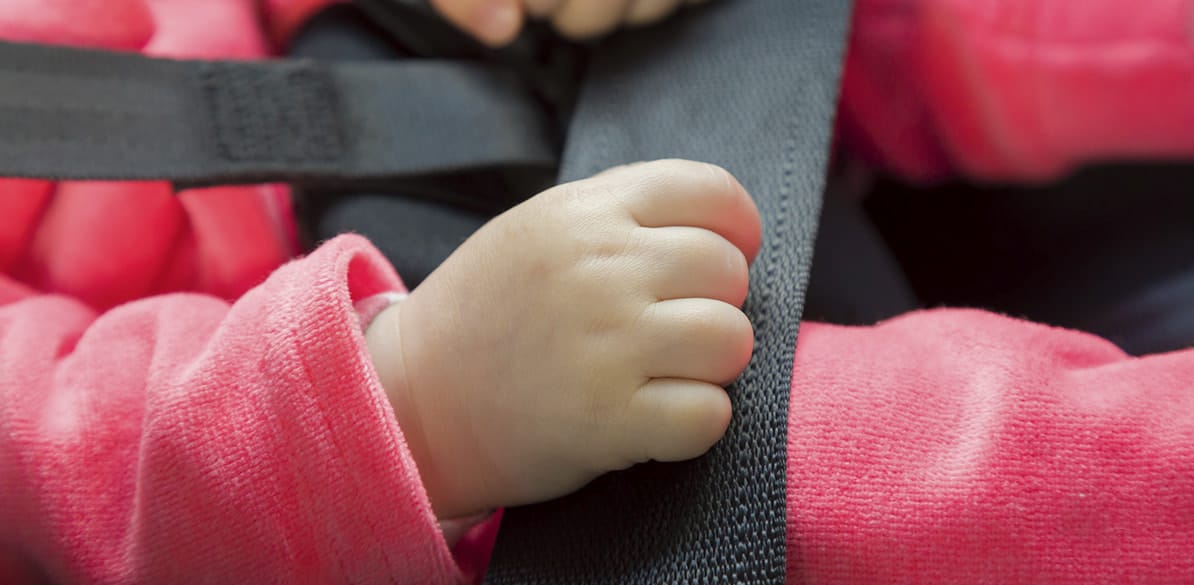Everything you need to know about CRS
We tell you what a child restraint system (CRS) is and what we should aim for when we use it

Road Safety
We want to shed some light on child restraint systems (CRS) and, to do this, we will start with a little bit of physics that we studied in high school, at least those of us who are approaching our fifties… .
Newton’s first law says: “Every body perseveres in its state of being at rest or of moving uniformly straight forward, except insofar as it is compelled to change its state by forces impressed.”
And how do we apply this in the case of a car? In case of sudden deceleration or impact, our body will try to maintain its state of uniform motion, which means that, if the vehicle was traveling at 80 km/h, we will continue to travel at that speed, even if the car has stopped, or almost stopped.
If our body continues at 80 km/h without any element varying that speed, the interior of the vehicle will bring us to a standstill, with no control over the consequences. This is what usually happens when we do not wear a seat belt. And if that happens there is no turning back.
We therefore need a system that allows us to reduce our speed from 80 km/h to 0 before we come into contact with the interior of the vehicle and without going beyond the space required to stop our body: this is what is known as the survival space.
In adults, the component that allows us to reduce speed is the seat belt, which can also act in combination with an airbag, and there are other systems that make this reduction even more effective. In children, who are too young to be restrained by adult systems, this function is performed by the car seat.
And what should this child restraint system be like?
Three key concepts provide the answer to this question: restraint, absorption and deflection.
What has been said so far only applies to the concept of restraint, in other words, slowing down the speed within the survival space, but is that enough? No.
While retention is the first objective of a good system, the second is absorption; and here is where our dear friend Isaac Newton appears again with his third law, which deals with the principle of action-reaction. He states: “When two bodies interact, they apply forces to one another that are equal in magnitude and opposite in direction”.
Therefore, if we exert a force on the restraint system, it will exert the same force on us in the opposite direction and, as a result, we stop. But how do we stop? That is the question.
It is not the same to be stopped by an iron cable, a 50 mm wide seat belt or an air bag, because, although the force we receive is the same in all three cases, the contact surface area is not the same. The cable is much thinner than the seat belt, and if we combine the the belt with the air bag, then the load is distributed even more. Indeed, increasing the contact surface area allows us to better withstand the change in speed or, in other words, the larger the contact surface area, the greater the energy absorption.
The third key concept is deflection. Not all parts of the body are capable of restraining us in the same way, nor of withstanding the same forces. Deflection therefore consists of transferring the energy of the impact to resistant areas of the body so that we suffer as little damage as possible.
One example that is easy to understand is a bungee jumper. Is there restraint? Yes, because the jumper is held in place by a harness and a rubber band that prevent them from hitting the ground. There is absorption because the fastening element (the rubber) is elastic and the harness covers a large area of the body. There is also deflection because the areas of the body involved in this restraint are the pelvis and clavicles, both of which are rigid and resistant.
But what would happen if the harness were attached to the neck? In terms of restraint and absorption there would be little difference, however, by diverting the energy to such a fragile area of the body as the neck, the results would be disastrous.
In conclusion, what should we aim for when using a restraint system? The answer is easy: to keep the child within its survival space, absorbing most of the energy of the impact, and diverting the rest to those areas of the body that are able to withstand it.
Not all car seats effectively address these three principles, yet they are essential if, in addition to transporting our children from one place to another, we are aiming for zero injuries.
